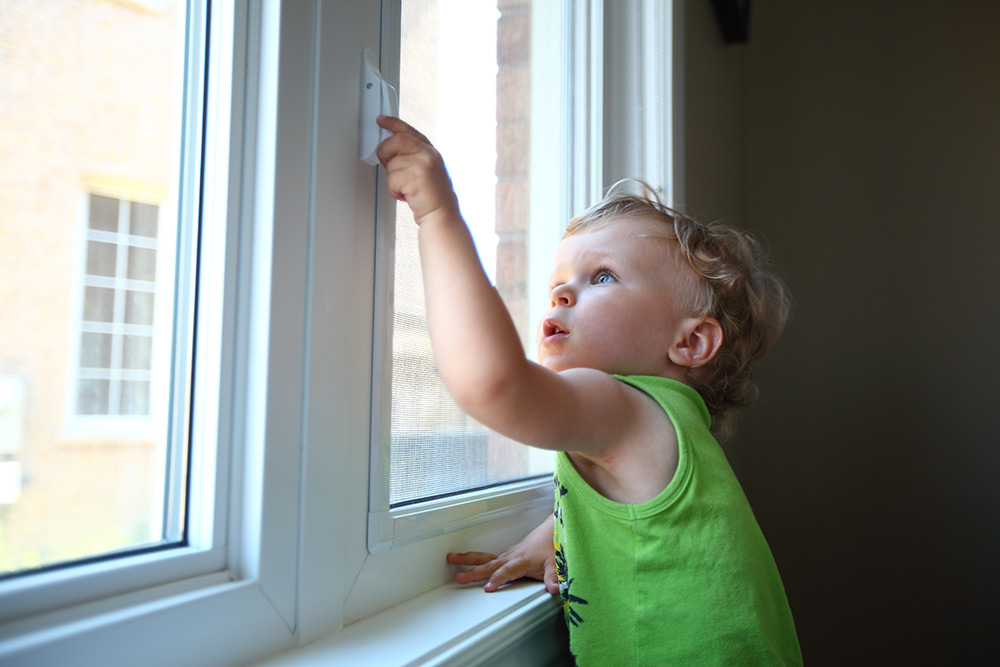Ensuring the safety of your children at home is a top priority for parents and caregivers. One area that often goes overlooked is window safety. Windows can pose a significant risk to young children, especially when they’re left open or are easily accessible. In this blog post, we will discuss various ways to childproof your home windows to prevent accidents and ensure your child’s safety.
Understand the Risks Associated with Windows
Before diving into the different methods of childproofing, it’s crucial to understand the risks associated with windows in your home.
Falls
Windows located on upper floors can be dangerous if a child manages to climb up and accidentally falls out. According to the Safe Kids Worldwide organization, approximately 3,300 children under the age of five falls from windows every year in the United States.
Strangulation
Window coverings like blinds and curtains can pose a strangulation hazard if they have cords or loops that a child can get tangled in.
Glass-Related Injuries
Broken glass can cause severe injuries to children. Windows that are not properly secured or are made of fragile glass can shatter and lead to cuts, lacerations, and other injuries.
With these risks in mind, let’s explore the various ways you can childproof your home windows.
Install Window Guards and Stops
One of the most effective ways to prevent falls from windows is to install window guards or stops. These devices limit how far a window can open, making it difficult for a child to climb through or accidentally fall out.
Window Guards
Window guards are metal or plastic bars that are installed on the interior side of a window frame. They can be adjusted to fit the width of your window and are designed to prevent children from squeezing through the gaps. Be sure to choose a window guard that meets the American Society for Testing and Materials (ASTM) standards for safety.
Window Stops
Window stops are small devices that can be installed on the window track or frame to limit how far the window can open. They are typically more discreet than window guards and can be easily removed by an adult in case of an emergency. Look for window stops that comply with the Consumer Product Safety Commission (CPSC) guidelines.
Choose Cordless Window Coverings
As mentioned earlier, window coverings like blinds and curtains can pose a strangulation risk if they have cords or loops. To eliminate this hazard, choose cordless window coverings, which are designed without cords or have concealed cords that are inaccessible to children.
Cordless Blinds and Shades
Cordless blinds and shades can be raised or lowered by simply pushing or pulling on the bottom rail. They are available in various styles and materials, making it easy to find an option that matches your home décor.
Motorized Window Coverings
For an even safer option, consider installing motorized window coverings. These can be controlled with a remote or smart device, eliminating the need for cords altogether.
Secure and Strengthen Your Windows
Taking steps to secure and strengthen your windows can help prevent accidents and injuries related to broken glass.
Install Window Locks
Window locks can be added to your existing windows to ensure they cannot be opened by a child. There are various types of window locks available, including sliding window locks, sash locks, and key-operated locks. Choose a lock that is appropriate for the type of windows in your home.
Use Shatter-Resistant Glass or Window Film
Consider replacing your existing windows with shatter-resistant glass, which is designed to remain intact even when broken. Alternatively, you can apply a window film to your existing windows to strengthen the glass and prevent it from shattering into dangerous shards.
Childproofing your home windows is an essential step in creating a safe environment for your children. By understanding the risks associated with windows, installing window guards or stops, choosing cordless window coverings, and securing and strengthening your windows, you can significantly reduce the likelihood of accidents and injuries. Take the time to assess your home’s windows and implement these safety measures to protect your little ones.

